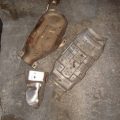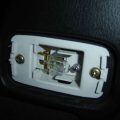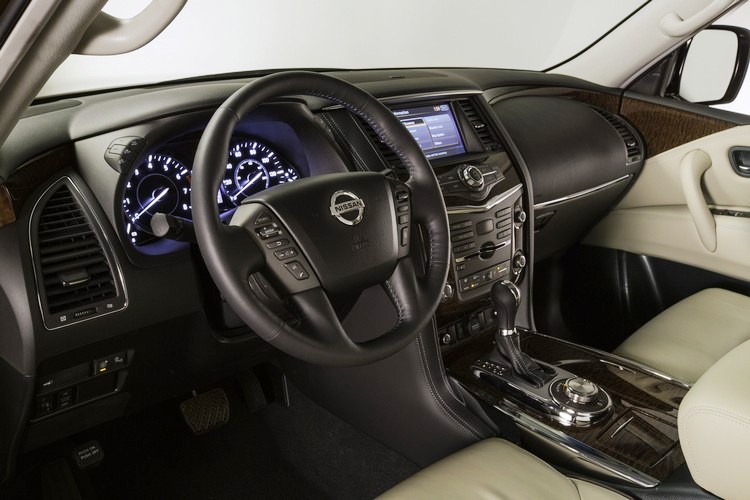Fuel Injector Replacement – 3rd Generation w/VE30DE
Note that this information is related to the 92-94 VE30DE engine, although I’m sure some of it can be applied to the VG30E engine, as well. If you have any doubts on your capability in performing this replacement, take your car to a certified mechanic.
What you need:
1. Intake manifold gasket; part number 14032-97E00
2. Throttle body gasket; part number 16175-53J00
3. E.G.R. gasket; Napa part number G31106
4. New / remanufactured fuel injectors/fuel rail assembly
The steps I performed:
1. Release fuel pressure to zero and disconnect the negative battery.
a. I did this by pulling the fuel pump fuse.
2. Separate the accelerator cables from the throttle body.
a. They easily slide off. Tilt the butterfly valves back to get them.
b. Remove the cabling and routing from the intake plenum.
3. Unhook the electrical connector for the throttle position sensor and (if Cali-spec Maxima) exhaust gas temperature sensor. This is located right next to the E.G.R. valve.
4. Remove the intake elbow leading to the throttle body.
a. There are two clamps on each end, and one clamp on the underside of the elbow. There are also two “squeeze-type” clamps holding hoses on either side of the elbow, as well.
b. Mine took a flat-head screwdriver, but I think either a 7mm or 10mm socket will work, as well.
5. Label and unhook the hoses from under the throttle body.
a. This would include the E.G.R. valve, the E.G.R. control solenoid valve, the intake manifold collector, and (if equipped with a manual transmission) the power valve control solenoid and the power valve actuator.
6. Disconnect throttle sensor harness connector (a c-clip holds this, and other harnesses, in place.
7. Remove the intake manifold support bolts, located on the back of the intake manifold.
a. There are two brackets, with two bolts each. This takes a 12mm socket, and a little contortionist work, as the working space is very limited.
8. There is a large, c-shaped hose that’s just to the right and behind the throttle body. I would recommend removing it, just so it is out of the way.
9. Remove the E.G.R. body from the back of the intake manifold.
a. This is held on by two nuts. I think they are 12mm in size.
10. Remove the hose that runs along the front of the intake manifold.
a. This is held on by two 10mm hex bolts that secure it to the manifold at 2.7-3-7 ft. lbs.
b. At this point, I would probably also remove the following: the wiring harness for the back and front row of coils, the PCV hose behind the intake manifold, another smaller hose just above the PCV hose, and the vacuum hose railing (10mm).
11. Remove the intake manifold.
a. There are six 6mm hex bolts that hold down the manifold at 13 – 16 ft lbs.
b. There is a special torque sequence that I observed in both loosening them and tightening them down. You will likely need to pry the manifold up and out, ensuring that no hoses, wires, etc., are still connected as you do so.
At this point, you should have the intake completely removed, which will leave 6 gaping holes in the top of your engine, which match up to the intake to the engine. There will likely be some remnants of the gasket there, as well. Plug up the intake holes before
cleaning the gasket surface.
12. Remove the fuel injector harness wires.
a. For the 92,93,94’s this is easy, as you just apply pressure on the harness and pull.
b. For the 90 and 91’s (and presumably 89’s) there is a metal wire clip that you must pull out or partially out to remove the connector.
13. Remove fuel injector(s)
a. At this point, I removed the entire fuel rail assembly, since my replacement was a complete assembly. If you’re doing it the way I did mine, then the bolts that hold it down are 6mm hex bolts, torqued at 2.7-3.7 ft. lbs. Otherwise, if you’re just taking out the injectors themselves, use a pair of pliers and grip them tightly, turning the injectors back and forth
before pulling upward. All should come out easily.
b. There should be two O rings per injector for the 92-94 injectors. I removed my entire fuel rail, so I’m only going by previous information, along with info from a Chilton’s manual. The lower O-ring will likely stay in the fuel rail hole upon removal of the injector. Just stick your finger in and retrieve it. Be sure to replace with new “O” rings, per the FSM.
14. Replace injector(s)
a. Apply motor oil or petroleum jelly to the O rings and carefully insert the new fuel injector. Instead of just pushing downward immediately, you should turn it back and forth, while applying downward pressure. You will see and feel the injector seat in how it should be. Before replacing, assure that the new ones spec out correctly with regard to resistance. The range of resistance allowed by Nissan is 10 –14 ohms.
15. Clean intake manifold, and intake runners.
a. I used Carb clean to do this. I sprayed a good amount of Carb clean down the intake runners and used a cloth to wipe the dirt out. You may want to try a toothbrush if you’ve got that kind of patience.
b. Be sure to completely scrape away all remaining gasket material on both surfaces so as not to allow an intake leak after assembly.
16. Reinstall all parts in reverse order, keeping in mind the torque sequence and use the torque wrench so as to tighten the following to these torque specifications, per the FSM:
a. Throttle body bolts (2-step process) – (1)6.5-8 ft. lbs. (2)13-16 ft. lbs.
b. Intake manifold hex bolts, 13-16 ft. lbs.
c. E.G.R. valve bolts – 9-12 ft lbs.
d. Intake manifold support brackets – 12-15 ft. lbs.
17. Reconnect the negative battery terminal.
18. Start the engine and check for leaks.







